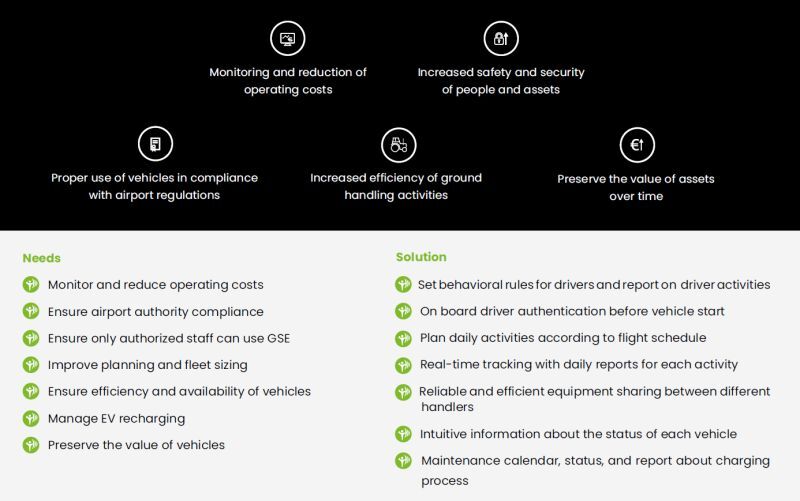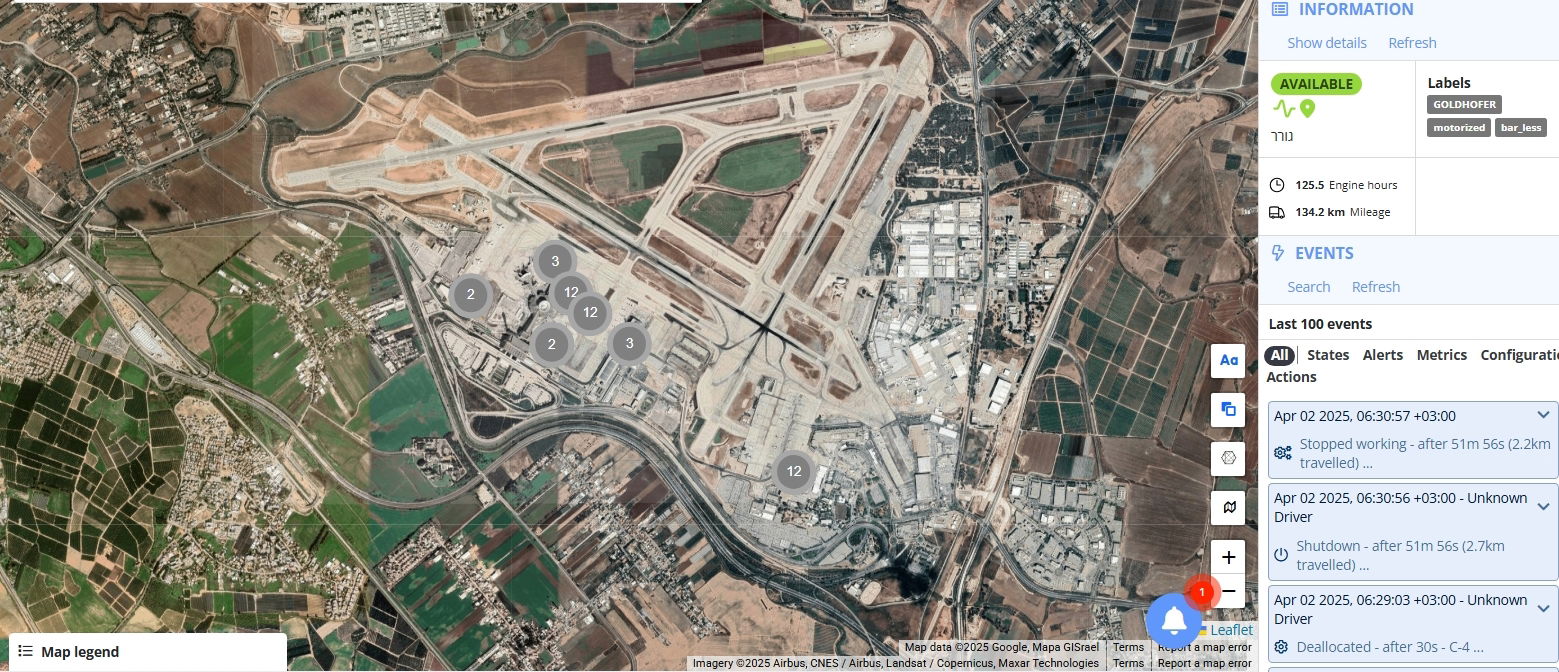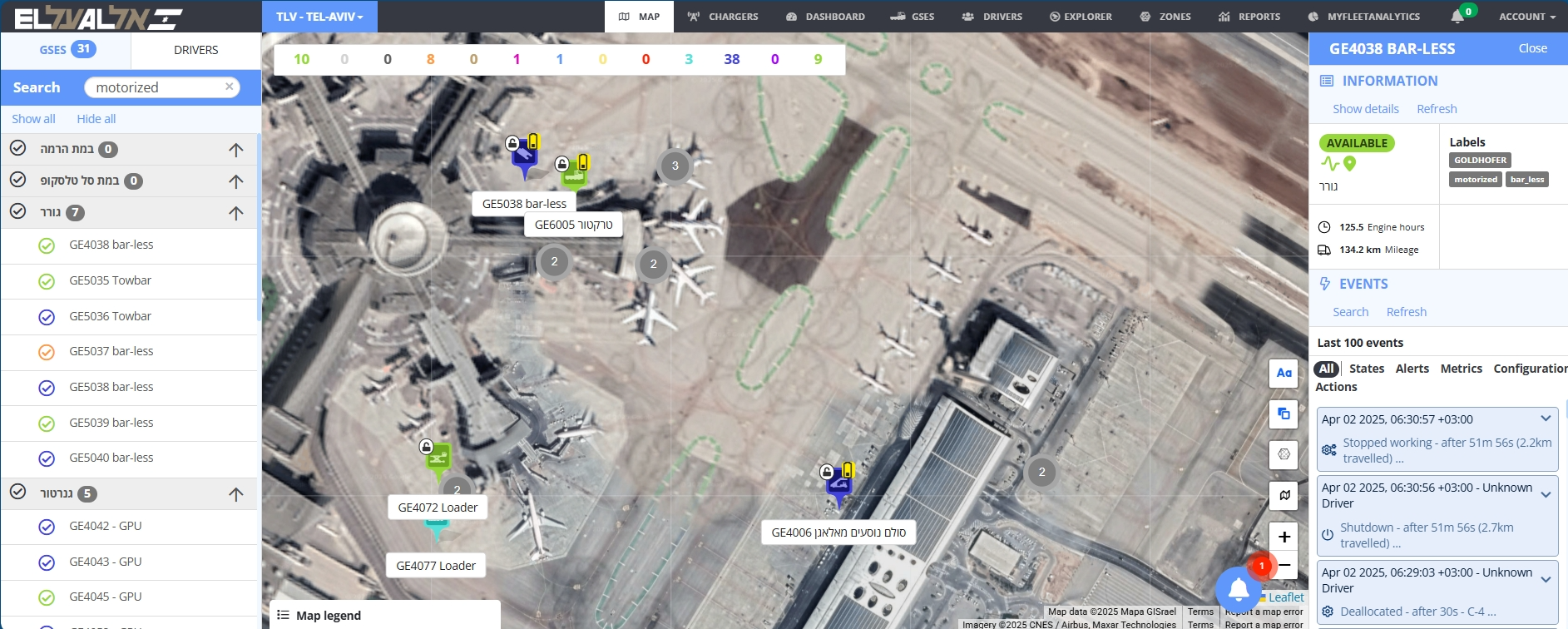IoT Smart Transportation & Fleet Management

IoT Smart Transportation & Fleet Management
Digital Transformation in Aviation Ground Support Equipment (GSE)
The digital transformation wave, driven by digitization, connectivity, and data, impacts all industries, notably aviation. While airports have made significant strides in digitizing through flight information displays, digital signage, automated baggage handling, and self-service passenger touchpoints, there are also challenges in implementing these changes. Connectivity initiatives, particularly those involving IoT, link airport stakeholders, passengers, staff, and assets, enabling seamless operations and data-driven collaboration. However, these initiatives also bring new challenges like data security and privacy concerns. Airport Collaborative Decision Making (A-CDM) emerged as a vital concept where airports serve as central data hubs for airlines, ground handlers, and passengers.
Big data (structured and unstructured data from various sources) is increasingly leveraged for business intelligence and analytics, significantly enhancing operational visibility. Digital projects are closely aligned with key performance indicators (KPIs) crucial to airport efficiency, especially for capacity-constrained airports aiming to optimize aircraft and passenger throughput. This emphasis on big data reassures the audience about the efficiency of airport operations. Key KPIs include on-time performance (OTP), inbound/outbound traffic efficiency, runway occupancy, aircraft parking capacity, irregular operations management, turnaround times, and gate departure delays.
As global air travel recovers and expands, the demand for efficient, reliable GSE grows significantly. Airports seek advanced equipment to handle increasing aircraft movements, reduce bottlenecks, and improve turnaround efficiency. Emerging markets, significantly, drive demand for innovative ground support technologies.
Key technological advances reshaping aviation ground support include:
Electric GSE (tugs, baggage tractors, and pushback vehicles) significantly reduces greenhouse gas emissions and costs, driven by sustainability and environmental regulations.
Automation (automated baggage systems, self-driving tugs, robotic aircraft maintenance) enhances operational efficiency, reduces human errors, and improves safety.
Data-driven systems provide real-time analytics for greater operational transparency and proactive decision-making, enhancing fleet management effectiveness.
Digital Transformation in Aviation Ground Support Equipment (GSE)
The digital transformation wave, driven by digitization, connectivity, and data, impacts all industries, notably aviation. While airports have made significant strides in digitizing through flight information displays, digital signage, automated baggage handling, and self-service passenger touchpoints, there are also challenges in implementing these changes. Connectivity initiatives, particularly those involving IoT, link airport stakeholders, passengers, staff, and assets, enabling seamless operations and data-driven collaboration. However, these initiatives also bring new challenges like data security and privacy concerns. Airport Collaborative Decision Making (A-CDM) emerged as a vital concept where airports serve as central data hubs for airlines, ground handlers, and passengers.
Big data (structured and unstructured data from various sources) is increasingly leveraged for business intelligence and analytics, significantly enhancing operational visibility. Digital projects are closely aligned with key performance indicators (KPIs) crucial to airport efficiency, especially for capacity-constrained airports aiming to optimize aircraft and passenger throughput. This emphasis on big data reassures the audience about the efficiency of airport operations. Key KPIs include on-time performance (OTP), inbound/outbound traffic efficiency, runway occupancy, aircraft parking capacity, irregular operations management, turnaround times, and gate departure delays.
As global air travel recovers and expands, the demand for efficient, reliable GSE grows significantly. Airports seek advanced equipment to handle increasing aircraft movements, reduce bottlenecks, and improve turnaround efficiency. Emerging markets, significantly, drive demand for innovative ground support technologies.
Key technological advances reshaping aviation ground support include:
Electric GSE (tugs, baggage tractors, and pushback vehicles) significantly reduces greenhouse gas emissions and costs, driven by sustainability and environmental regulations.
Automation (automated baggage systems, self-driving tugs, robotic aircraft maintenance) enhances operational efficiency, reduces human errors, and improves safety.
Data-driven systems provide real-time analytics for greater operational transparency and proactive decision-making, enhancing fleet management effectiveness.

IoT Fleet Management Platform's project in B.G AP


